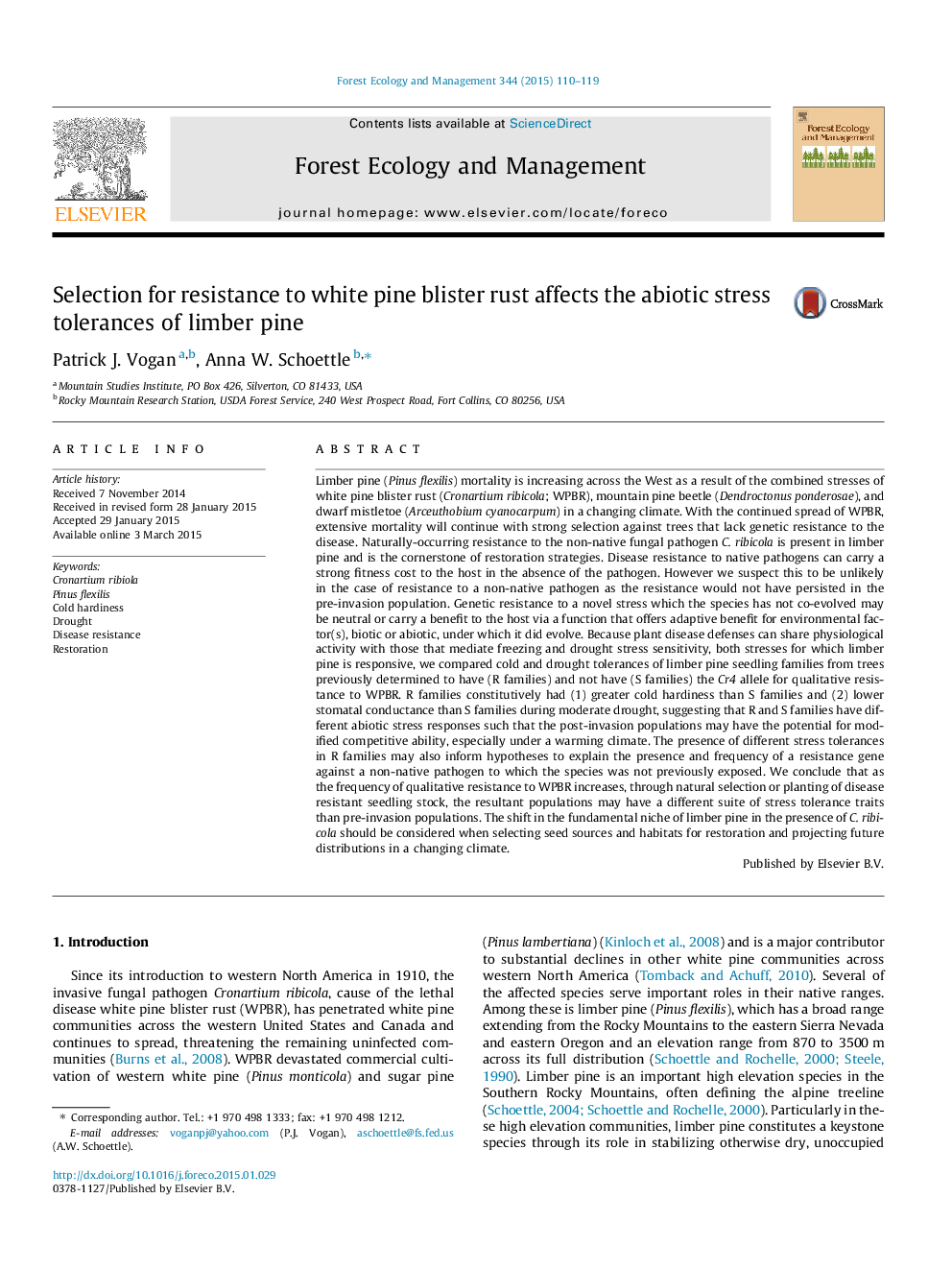| کد مقاله | کد نشریه | سال انتشار | مقاله انگلیسی | نسخه تمام متن |
|---|---|---|---|---|
| 86321 | 159178 | 2015 | 10 صفحه PDF | دانلود رایگان |
• We compared traits of limber pine families with and without resistance to WPBR.
• Selection and management for WPBR resistance may affect abiotic stress tolerance traits.
• Plant adaptations to biotic and abiotic stresses are intertwined.
• Non-native pests may have lasting genetic effects on species performance.
• These results can help target suitable habitats for restoration planting.
Limber pine (Pinus flexilis) mortality is increasing across the West as a result of the combined stresses of white pine blister rust (Cronartium ribicola; WPBR), mountain pine beetle (Dendroctonus ponderosae), and dwarf mistletoe (Arceuthobium cyanocarpum) in a changing climate. With the continued spread of WPBR, extensive mortality will continue with strong selection against trees that lack genetic resistance to the disease. Naturally-occurring resistance to the non-native fungal pathogen C. ribicola is present in limber pine and is the cornerstone of restoration strategies. Disease resistance to native pathogens can carry a strong fitness cost to the host in the absence of the pathogen. However we suspect this to be unlikely in the case of resistance to a non-native pathogen as the resistance would not have persisted in the pre-invasion population. Genetic resistance to a novel stress which the species has not co-evolved may be neutral or carry a benefit to the host via a function that offers adaptive benefit for environmental factor(s), biotic or abiotic, under which it did evolve. Because plant disease defenses can share physiological activity with those that mediate freezing and drought stress sensitivity, both stresses for which limber pine is responsive, we compared cold and drought tolerances of limber pine seedling families from trees previously determined to have (R families) and not have (S families) the Cr4 allele for qualitative resistance to WPBR. R families constitutively had (1) greater cold hardiness than S families and (2) lower stomatal conductance than S families during moderate drought, suggesting that R and S families have different abiotic stress responses such that the post-invasion populations may have the potential for modified competitive ability, especially under a warming climate. The presence of different stress tolerances in R families may also inform hypotheses to explain the presence and frequency of a resistance gene against a non-native pathogen to which the species was not previously exposed. We conclude that as the frequency of qualitative resistance to WPBR increases, through natural selection or planting of disease resistant seedling stock, the resultant populations may have a different suite of stress tolerance traits than pre-invasion populations. The shift in the fundamental niche of limber pine in the presence of C. ribicola should be considered when selecting seed sources and habitats for restoration and projecting future distributions in a changing climate.
Journal: Forest Ecology and Management - Volume 344, 15 May 2015, Pages 110–119
